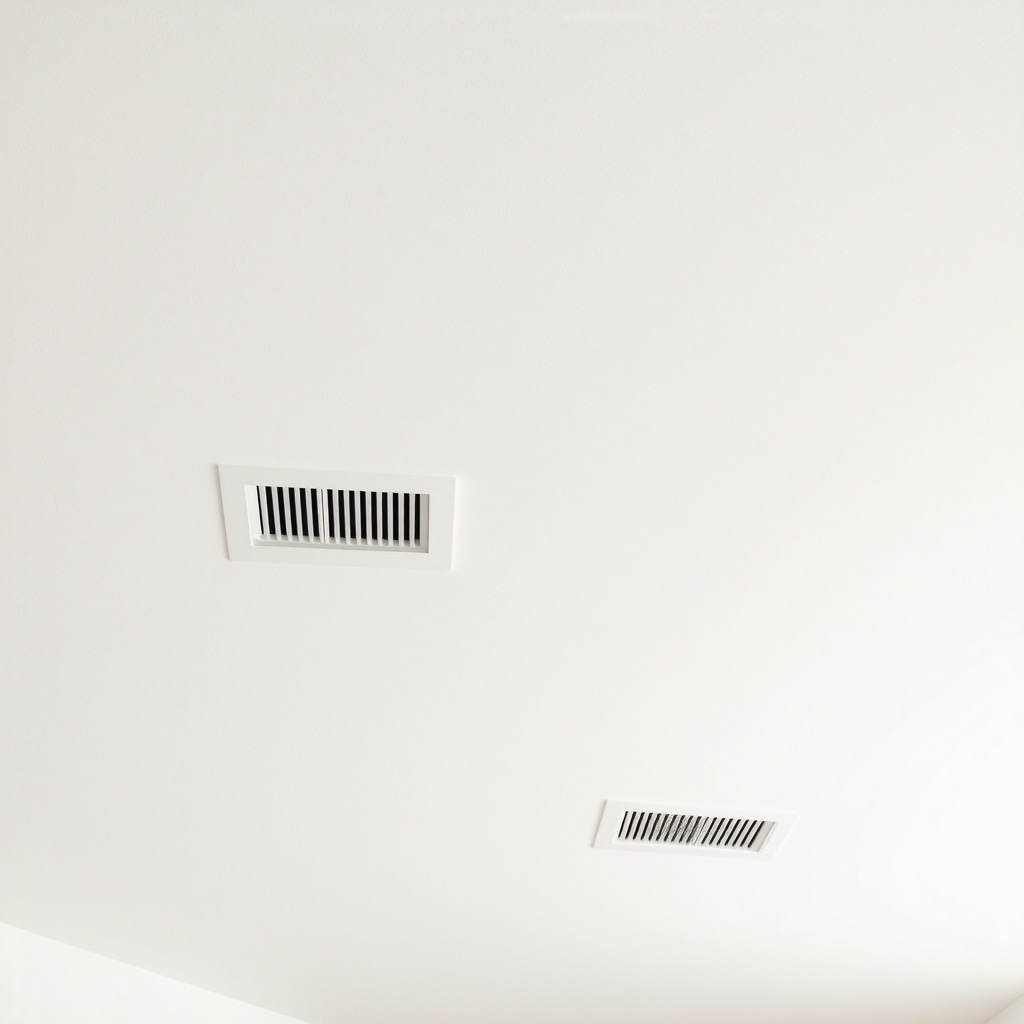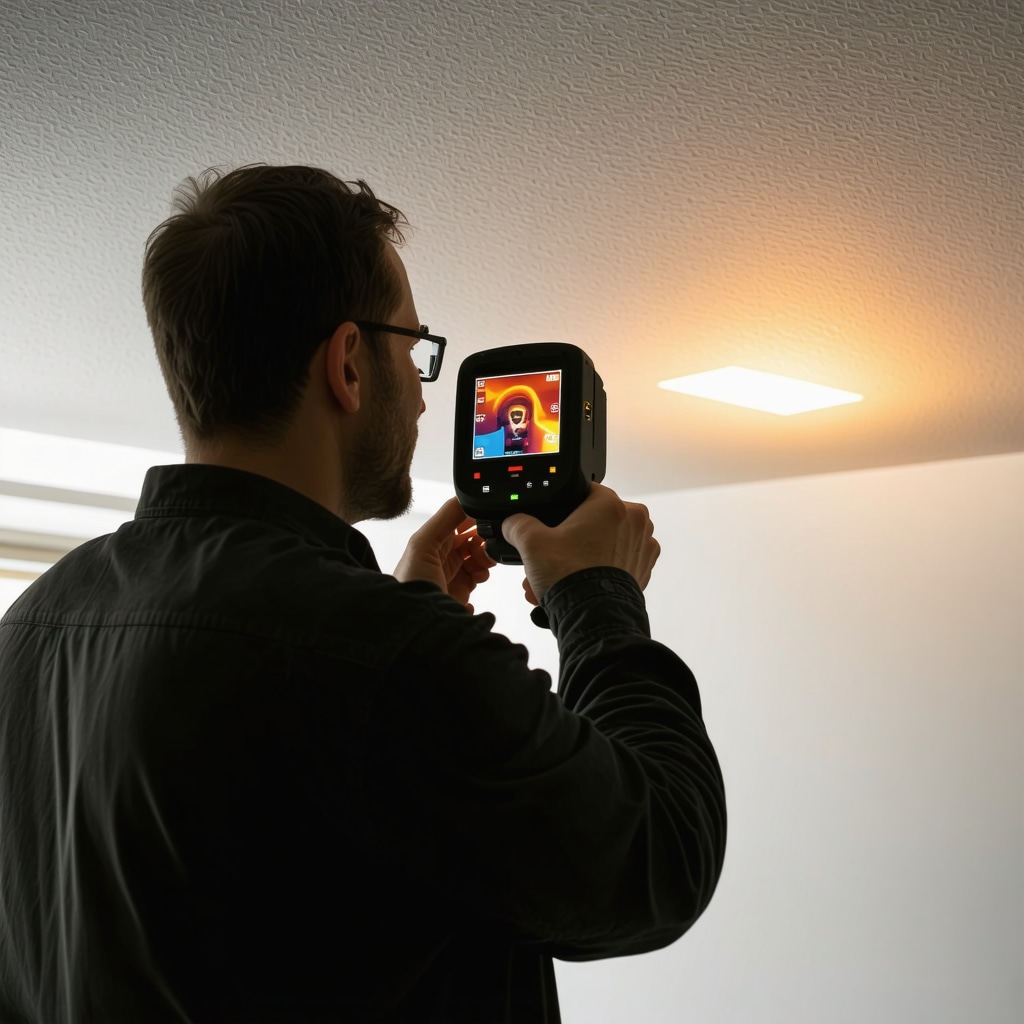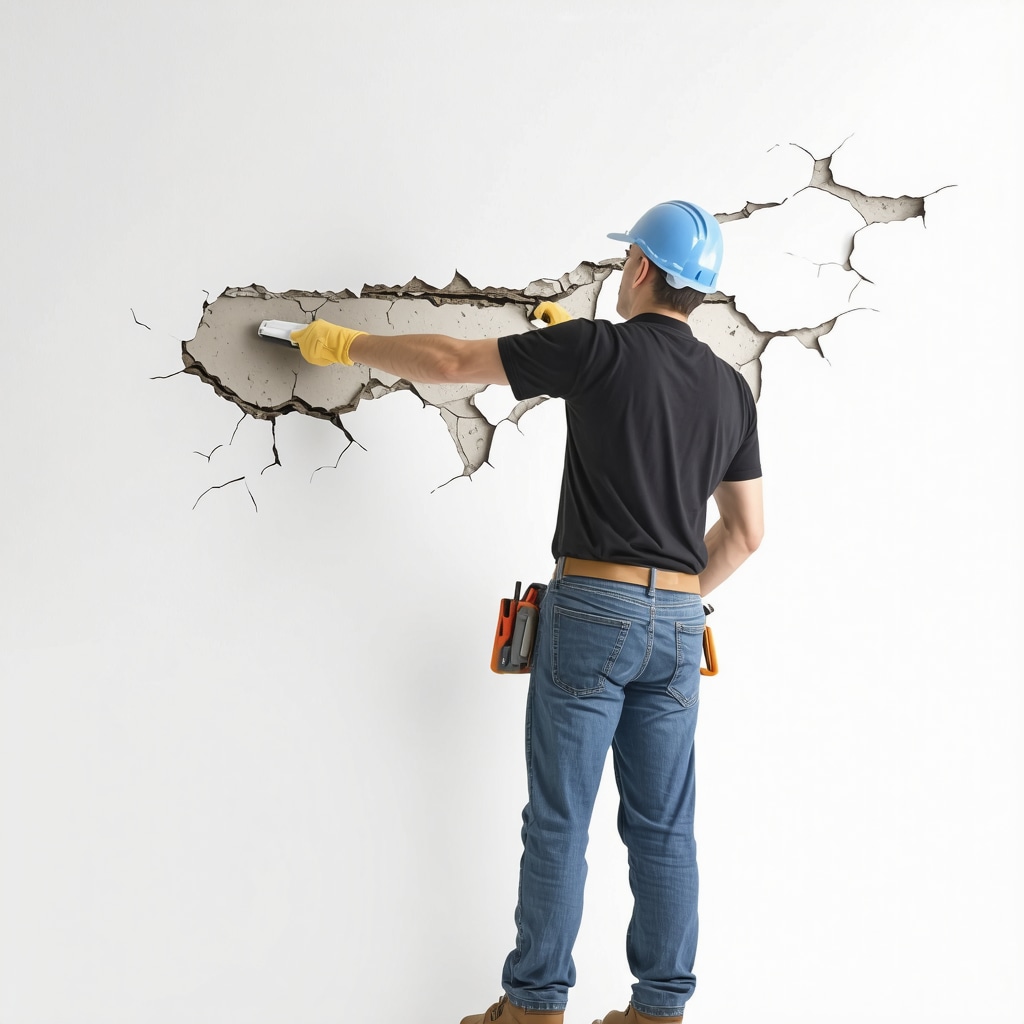When Your Ceiling Tells a Story: Unveiling the Hidden Causes of Drywall Damage in Tampa Homes
Drywall ceiling damage is often the silent herald of deeper issues lurking within your Tampa home’s structure or environment. From subtle water stains to the disconcerting sagging, these signs demand more than a quick patch-up; they require expert diagnosis and care. Tampa’s humid climate, coupled with occasional severe weather, uniquely challenges drywall integrity, making trusted local contractors invaluable for lasting repairs.
Mastering the Art of Drywall Ceiling Repairs: Insights from Tampa’s Skilled Craftsmen
Repairing damaged drywall ceilings goes beyond cosmetic fixes. Experienced contractors in Tampa adopt a meticulous approach: identifying underlying moisture sources, removing compromised material, and applying industry-grade materials for a seamless restoration. They tailor solutions to match your home’s specific needs, preserving structural integrity while enhancing aesthetic appeal. Their expertise ensures durability, preventing recurring issues that can plague poorly executed repairs.
What Are the Signs That Indicate You Need a Drywall Ceiling Specialist in Tampa?
Recognizing when to call a professional is crucial to avoid escalating damage. Key indicators include visible cracks, bubbling or peeling paint, water stains, and sagging sections. Additionally, musty odors or mold presence behind the ceiling suggest moisture intrusion—a common culprit in Tampa’s climate. Engaging a skilled drywall contractor for ceiling damage repairs in Tampa ensures comprehensive assessment and targeted remediation.
Innovative Techniques and Materials Elevating Tampa’s Drywall Ceiling Repairs
Modern drywall repair integrates advanced moisture-resistant drywall panels and eco-friendly compounds that improve the ceiling’s lifespan while mitigating mold development. Tampa’s trusted repair contractors stay abreast of these innovations, employing methods that align with both local building codes and environmental considerations. This commitment to quality safeguards your investment and enhances indoor air quality.
Partnering with Tampa’s Drywall Experts: What to Expect and How to Prepare
Choosing the right contractor involves verifying credentials, insurance, and local experience. Tampa homeowners benefit from professionals who communicate transparently, provide detailed estimates, and respect your schedule and property. Preparing your space by clearing access areas and discussing project scope upfront fosters smooth collaboration. For a deeper dive on selecting trusted experts, visit how to choose the best drywall contractor for ceiling damage.
Drywall ceiling damage can disrupt your home’s safety and comfort, but with Tampa’s trusted repair contractors, restoration is both art and science. Share your own drywall repair stories or questions below to join a community passionate about resilient, beautiful homes.
For further authoritative insights into moisture control and drywall durability, the EPA’s Mold Course Chapter 2 offers comprehensive guidance on preventing and addressing moisture-related ceiling damage.
Recognizing Subtle Clues: When to Act on Drywall Ceiling Damage in Tampa
From my experience working with homes in Tampa’s humid environment, the telltale signs of drywall ceiling damage can sometimes be subtle but critical to catch early. I recall a client who noticed faint discoloration along the edges of their ceiling panels, accompanied by a faint musty smell. At first glance, it seemed minor, but this was actually a precursor to more serious moisture intrusion. That’s why it’s essential to look beyond just visible cracks or sagging to include odors and changes in texture.
Local experts often emphasize that in Tampa’s climate, moisture is the common denominator behind many drywall ceiling problems. This aligns with findings from the EPA’s Mold Course Chapter 2, which underscores that unchecked moisture leads to mold growth that compromises drywall integrity and indoor air quality. Awareness of these factors helped me appreciate why thorough inspection is crucial before any repair.
Why Choosing a Licensed Contractor in Tampa Makes All the Difference
One lesson I’ve learned through multiple projects is the peace of mind that comes with hiring a licensed and insured general contractor for drywall ceiling repairs. Tampa’s building codes and weather demands mean that cutting corners can lead to recurring problems or even safety hazards. I always recommend verifying credentials and asking for proof of insurance to protect your home and investment.
Contractors like those detailed in why hire an insured general contractor for Tampa renovations offer not only technical skill but also accountability and quality assurance. Their adherence to local regulations ensures repairs withstand Tampa’s unique climate challenges.
How Do You Prepare Your Home for a Drywall Ceiling Repair Project?
Preparing your home beforehand can make a huge difference in the repair process. I always advise homeowners to clear the area beneath the damaged ceiling and cover furniture to prevent dust accumulation. Communication with your contractor about project timelines and any special considerations—like accommodating children or pets—also smooths the experience.
Another tip I’ve found helpful is discussing with your contractor the type of materials they plan to use. For example, moisture-resistant drywall panels and eco-friendly compounds are increasingly popular in Tampa to enhance durability and reduce mold risk. Knowing this ahead of time helps set expectations and ensures you get the best value.
Ever Wondered How Tampa’s Humidity Specifically Affects Drywall Repairs?
Given Tampa’s coastal location, humidity levels often hover higher than in many parts of the country. This persistent moisture saturation can cause drywall to swell, warp, and eventually crumble if untreated. During one project, I noticed that even after initial repairs, the ceiling showed minor bubbling again after heavy rains—highlighting the need for contractors to incorporate moisture barriers and ventilation solutions.
This is why choosing contractors familiar with Tampa’s climate is so important. They bring insights that generic repair advice might miss, such as proper sealing techniques and strategic ventilation to keep ceilings dry long-term.
Sharing Experiences: Your Drywall Repair Stories Matter
Have you tackled drywall ceiling damage in your Tampa home? What challenges did you face, and how did you find the right help? I’d love to hear your stories in the comments below. Sharing personal experiences not only builds community but also helps others navigate similar issues with confidence.
For ongoing tips and expert advice on home repairs, consider exploring related topics like drywall patching contractors in Tampa or affordable home renovation experts who provide great value without compromise.
Cutting-Edge Moisture Mitigation Techniques: Beyond Basic Drywall Repair in Tampa
In Tampa’s persistently humid environment, traditional drywall repair methods often fall short of ensuring long-term durability. To combat this, industry leaders are incorporating advanced moisture mitigation strategies that address the root causes of drywall deterioration. These include the installation of vapor barriers, strategic use of moisture-resistant drywall (Type X or green board), and enhanced ventilation systems to regulate indoor humidity levels effectively.
Such approaches not only prevent water infiltration but also inhibit mold proliferation, a critical concern in Tampa homes. For example, integrating ventilation guidelines from the American Wood Council into repair plans ensures compliance with best practices that safeguard drywall integrity and indoor air quality.
How Do Advanced Ventilation and Sealing Techniques Specifically Enhance Drywall Ceiling Longevity in Tampa?
Advanced ventilation techniques, such as the installation of powered attic ventilators and continuous soffit vents, facilitate air circulation that reduces moisture accumulation above drywall ceilings. When combined with meticulous sealing of potential air leaks using spray foam or high-quality caulking, these measures create a controlled indoor environment less prone to humidity-related damage.
For instance, a well-sealed ceiling envelope minimizes the intrusion of warm, moist air from Tampa’s external environment, which otherwise condenses on cooler surfaces behind drywall. This condensation is a primary driver of swelling, sagging, and mold growth. Experienced contractors tailor these solutions based on home-specific assessments, integrating moisture sensors and thermal imaging to identify hidden vulnerabilities.
Innovations in Eco-Friendly and Mold-Resistant Drywall Materials Tailored for Tampa’s Environment
Material science advancements have birthed drywall products infused with antimicrobial agents and enhanced mold resistance, ideal for Tampa’s challenges. Products like USG’s Sheetrock® Brand Mold Tough® drywall combine moisture resistance with environmentally conscious manufacturing processes, reducing VOC emissions while extending material lifespan.
Employing such innovative materials aligns with Tampa’s increasing emphasis on sustainable building practices and occupant health. Contractors well-versed in these products can recommend optimal solutions that balance cost, performance, and environmental impact, providing homeowners with superior results.
Collaborative Technology Integration: Using Digital Tools for Precise Drywall Damage Assessment
Modern drywall repair in Tampa increasingly leverages digital tools such as thermal imaging cameras and moisture meters to pinpoint damage sources with unprecedented precision. This technology-driven approach allows for targeted interventions, minimizing unnecessary material removal and accelerating repair timelines.
Moreover, digital documentation enhances transparency and communication between homeowners and contractors, fostering trust and informed decision-making. Tampa’s leading drywall experts incorporate such innovations to deliver bespoke repair strategies that address both surface damage and underlying structural concerns.

As Tampa homeowners grapple with the complex interplay of humidity, material science, and building technology, understanding these advanced repair nuances becomes essential. Whether you’re facing a minor patch or extensive ceiling restoration, partnering with experts who embrace these sophisticated methods ensures peace of mind and lasting results.
Engage with our community by sharing your questions or experiences with advanced drywall repair techniques below. For more specialized knowledge, explore resources like the American Wood Council’s building codes and standards to deepen your understanding of moisture control and structural best practices.
Decoding Tampa’s Climatic Impact: The Science Behind Drywall Deterioration
Understanding the intricate effects of Tampa’s subtropical climate on drywall longevity requires a nuanced grasp of material science and environmental dynamics. Elevated humidity levels, averaging above 70% annually, accelerate cellulose-based drywall’s degradation through persistent moisture absorption. This phenomenon often results in microfractures invisible to the naked eye but critical to structural integrity, necessitating precision diagnostics beyond surface inspection.
Integrative Solutions: Marrying Technology and Craftsmanship in Tampa Drywall Restoration
Leveraging emerging technologies such as infrared thermography and hygroscopic monitoring, Tampa drywall specialists can now localize moisture pockets with unprecedented accuracy. This enables targeted remediation, preserving unaffected ceiling sections and optimizing repair costs. Coupled with artisanal craftsmanship, these data-driven methods foster restorations that harmonize durability with aesthetic finesse.
What Are the Latest Standards and Best Practices for Drywall Ceiling Repairs in High-Humidity Regions Like Tampa?
Recent updates to the American Wood Council’s building codes emphasize enhanced vapor barrier installation and specify the use of mold-resistant drywall variants compliant with ASTM D3273 standards. These guidelines advocate for comprehensive moisture management strategies, including balanced ventilation, controlled indoor humidity, and the integration of moisture sensors to proactively identify vulnerabilities. Adherence to these standards is imperative for ensuring ceiling resilience and occupant health in Tampa’s demanding environment.
Preventive Architecture: Designing Drywall Systems for Long-Term Resilience in Tampa Homes
Proactive design incorporating layered vapor retarders, strategically placed air barriers, and high-performance insulation materials can significantly mitigate moisture ingress. Tampa’s leading contractors recommend customized ventilation schemas, such as continuous ridge and soffit venting, to facilitate convective airflow and prevent condensation. These architectural considerations extend drywall lifespan by addressing environmental stressors at their source.
Expert Collaboration: Engaging Tampa’s Drywall Authorities for Tailored Solutions
Establishing a collaborative relationship with seasoned drywall professionals ensures access to bespoke repair protocols tailored to your home’s unique characteristics. These experts conduct thorough environmental assessments, including thermal mapping and humidity profiling, to inform strategic interventions. Their proficiency in integrating cutting-edge materials and techniques guarantees repairs that withstand Tampa’s climatic rigors.
Embrace the opportunity to elevate your drywall ceiling maintenance by consulting with Tampa’s foremost specialists. Share your questions or project details to receive personalized guidance that transcends conventional repair approaches.

Frequently Asked Questions (FAQ)
What are the most common causes of drywall ceiling damage in Tampa homes?
In Tampa, the primary causes of drywall ceiling damage include persistent high humidity, water intrusion from roof leaks or plumbing failures, and inadequate ventilation. These factors lead to moisture accumulation that weakens drywall, causing sagging, staining, and mold growth.
How can I identify early signs of drywall ceiling damage that require professional attention?
Early indicators include subtle discoloration or water stains, bubbling or peeling paint, musty odors, minor cracking, and slight sagging. Since these signs often precede serious structural issues, prompt evaluation by a licensed contractor is recommended.
Why is hiring a licensed and insured drywall contractor essential in Tampa?
Licensed contractors ensure compliance with Tampa’s unique building codes and climate considerations, which is vital for effective moisture control and long-lasting repairs. Insurance protects homeowners from liability or damages during the repair process, providing peace of mind.
What advanced materials are recommended for drywall ceiling repairs in humid climates like Tampa?
Moisture-resistant drywall varieties such as mold tough drywall (e.g., USG Sheetrock® Brand Mold Tough®), Type X drywall, and eco-friendly compounds infused with antimicrobial agents are highly recommended. These materials resist mold and moisture absorption, enhancing durability in Tampa’s environment.
How do ventilation and sealing techniques improve drywall ceiling longevity?
Proper ventilation reduces indoor humidity levels by facilitating air circulation, while meticulous sealing prevents warm, moist air infiltration that causes condensation behind drywall. Together, they minimize moisture-related deterioration and mold growth.
Can digital tools improve the accuracy of drywall damage diagnosis?
Yes. Technologies such as thermal imaging cameras and moisture meters allow precise detection of hidden moisture pockets and compromised areas, enabling targeted repairs that save time and reduce unnecessary demolition.
What preventive measures can homeowners take to avoid drywall ceiling damage in Tampa?
Homeowners should maintain roof and plumbing integrity, ensure proper attic ventilation, use moisture barriers where applicable, monitor indoor humidity, and schedule regular professional inspections to catch early signs of damage.
How do Tampa’s building codes influence drywall repair practices?
Tampa’s building codes, informed by regional climate data, mandate the use of vapor retarders, mold-resistant materials, and ventilation standards. Adhering to these codes ensures repairs are resilient and safe.
Is it possible to repair drywall ceiling damage without replacing entire sections?
Depending on damage extent, targeted patching and localized replacement are feasible. However, underlying moisture sources must be addressed to prevent recurrence, and sometimes full panel replacement is necessary for structural safety.
What role does material innovation play in eco-friendly drywall repairs?
Innovations like low-VOC compounds and antimicrobial drywall products reduce environmental impact and improve indoor air quality while providing enhanced resistance to mold and moisture, aligning with sustainable building practices.
Trusted External Sources
- Environmental Protection Agency (EPA) Mold Course Chapter 2 – Offers authoritative guidance on moisture control and mold prevention, crucial for understanding moisture-related drywall damage in humid climates like Tampa.
- American Wood Council (AWC) Building Codes and Standards – Provides up-to-date codes and best practices for moisture management, vapor barriers, and ventilation techniques relevant to drywall installation and repair.
- USG Corporation Technical Literature – Details specifications and performance data on advanced drywall materials such as Mold Tough® drywall, informing material selection for Tampa’s environment.
- Florida Building Code (FBC) – Regional construction standards that incorporate climate-specific requirements for moisture control and structural safety in drywall repairs.
- Journal of Building Physics – Academic research articles on the impact of humidity on building materials and innovative moisture mitigation strategies applicable to drywall ceiling systems.
Conclusion: Expert Takeaways on Drywall Ceiling Damage and Repair in Tampa
Drywall ceiling damage in Tampa homes is a multifaceted challenge shaped by the city’s subtropical climate, moisture dynamics, and evolving building technologies. Recognizing subtle signs early, engaging licensed contractors familiar with local codes and environmental factors, and utilizing advanced moisture-resistant materials are key to durable and healthy ceiling restoration.
Innovations in ventilation, sealing, and digital diagnostics empower tailored repair strategies that protect structural integrity and indoor air quality. By integrating preventive architecture and embracing eco-friendly solutions, Tampa homeowners can safeguard their investments against recurrent damage.
We invite you to share your drywall repair experiences or questions to enrich our community dialogue. Explore our related expert content to deepen your understanding and apply these insights for resilient, beautiful homes that stand the test of Tampa’s unique climate.

Having recently dealt with drywall ceiling damage in my Tampa home, I can attest to how tricky these repairs can be, especially given the area’s high humidity. What really stood out to me after reading this post was the emphasis on not just fixing what you see but addressing the underlying moisture issues. In my case, I initially thought it was just a cosmetic problem, but after hiring a licensed contractor who used thermal imaging, we discovered hidden leaks and poor attic ventilation contributing to the damage. They recommended moisture-resistant drywall and installed proper vapor barriers, which has made a huge difference. I’m curious, though, how homeowners balance the cost of these advanced materials and technologies with the urgency of repair? Have others found affordable ways to integrate these newer solutions without breaking the bank? Also, how do you maintain preventative measures long-term in Tampa’s challenging climate? I’d love to hear other local experiences or tips on proactive maintenance to avoid recurring drywall ceiling issues.
Reading this post really resonated with me, especially the part about early signs of drywall damage often being subtle. I’ve noticed minor discoloration and some peeling paint in my Tampa home but thought it was just ordinary wear and tear. Since Tampa’s high humidity can accelerate hidden issues, I now realize the importance of timely inspection by a professional. My experience with moisture-resistant drywall and proper sealing techniques has definitely improved the situation, but I still worry about long-term maintenance amid our climate challenges. What are readers’ thoughts on best practices for ongoing upkeep? Are there specific seasonal checks or treatments that help keep drywall in good shape longer? I’d love to hear what methods others have successfully used to prevent recurrence, especially with Tampa’s unpredictable weather patterns. Also, I’m curious—how often should homeowners schedule professional inspections, considering Tampa’s environmental factors? Your insights could really help us all extend the lifespan of drywall in this humid environment.